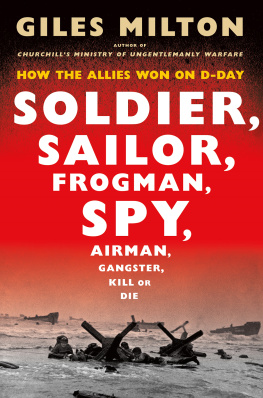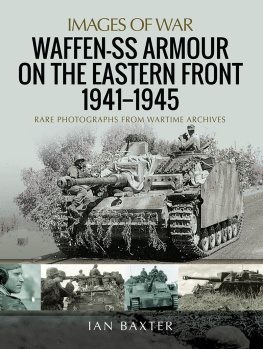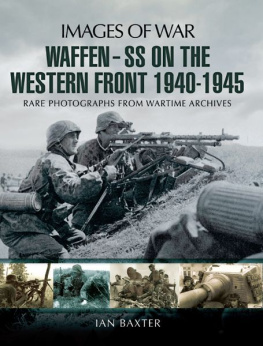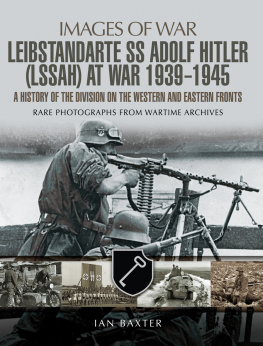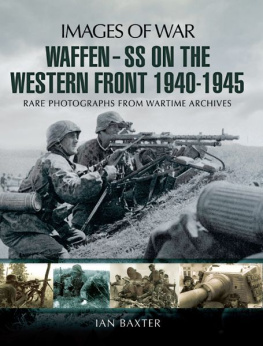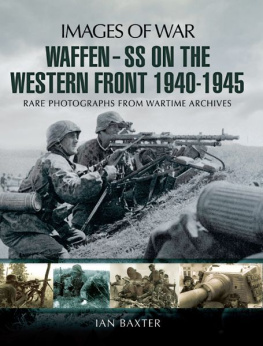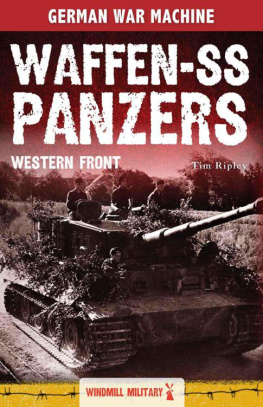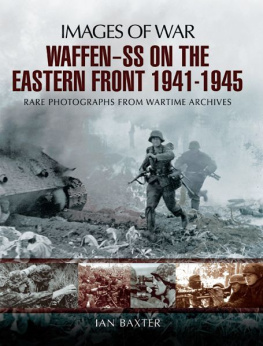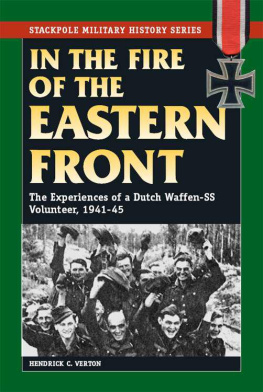Milton - The Waffen SS: In the East 1943-1945
Here you can read online Milton - The Waffen SS: In the East 1943-1945 full text of the book (entire story) in english for free. Download pdf and epub, get meaning, cover and reviews about this ebook. year: 2016, publisher: Coda Books Ltd., genre: Non-fiction. Description of the work, (preface) as well as reviews are available. Best literature library LitArk.com created for fans of good reading and offers a wide selection of genres:
Romance novel
Science fiction
Adventure
Detective
Science
History
Home and family
Prose
Art
Politics
Computer
Non-fiction
Religion
Business
Children
Humor
Choose a favorite category and find really read worthwhile books. Enjoy immersion in the world of imagination, feel the emotions of the characters or learn something new for yourself, make an fascinating discovery.

- Book:The Waffen SS: In the East 1943-1945
- Author:
- Publisher:Coda Books Ltd.
- Genre:
- Year:2016
- Rating:5 / 5
- Favourites:Add to favourites
- Your mark:
- 100
- 1
- 2
- 3
- 4
- 5
The Waffen SS: In the East 1943-1945: summary, description and annotation
We offer to read an annotation, description, summary or preface (depends on what the author of the book "The Waffen SS: In the East 1943-1945" wrote himself). If you haven't found the necessary information about the book — write in the comments, we will try to find it.
Milton: author's other books
Who wrote The Waffen SS: In the East 1943-1945? Find out the surname, the name of the author of the book and a list of all author's works by series.
The Waffen SS: In the East 1943-1945 — read online for free the complete book (whole text) full work
Below is the text of the book, divided by pages. System saving the place of the last page read, allows you to conveniently read the book "The Waffen SS: In the East 1943-1945" online for free, without having to search again every time where you left off. Put a bookmark, and you can go to the page where you finished reading at any time.
Font size:
Interval:
Bookmark:


www.codabooks.com
This eBook edition is published in Great Britain in 2011 by
Coda Books Ltd, The Barn, Cutlers Farm Business Centre, Edstone, Wootton Wawen, Henley in Arden, Warwickshire, B95 6DJ
www.codahistory.com
Copyright 2011 by Coda Books Ltd
All rights reserved. No part of this publication may be reproduced or transmitted in any form or by any means, electronic or mechanical, including photocopy, recording, or any information storage and retrieval system, without permission in writing from the publisher.
A CIP catalogue record for this book is available from the British Library
ISBN: 978-1-908538-94-9
FOREWORD
From 1943 to 1945 the Waffen SS, the armed political wing of the Schutzstaffel or Nazi party, in the East were engaged in a long and bloody retreat against a numerically far superior enemy. As they fell back across the vast plains of the Soviet Union, Poland, Hungary and ultimately Germany itself, death or ignominious defeat at the hands of the Red Army became their fate. But the Waffen SS, true to their character, fought a fanatical rearguard action to the end. In the process they showed utterly heroic if increasingly futile acts of bravery against overwhelming odds.
The turning point in the East was the Soviet Unions vastly superior forces in terms of men, planes and crucially armour which after 1942 began to decisively alter the outcome of the war. While the Germans had developed new tanks such as the Panther and the Tiger to counter the threat of the formidable Soviet T34, they simply could not produce them in sufficient quantities to make a difference. By the end of the war the Germans had produced nearly 6,000 Panthers and just over 1,300 Tiger tanks. In comparison the Russians were building over 1,200 T34 tanks a month.
The devastating defeat at Stalingrad in February 1943 epitomised the changing fortunes of the Germany army or Wehrmacht in the East. To counter what he saw as the defeatist attitude of the army, Hitler increasingly turned to the Waffen SS whose loyalty and fighting spirit were never in question. The Wehrmachts loss became the Waffen SSs gain as the Fhrers fire brigade were used to plug the gaps and hold the line against the marauding Red Army.
By 1945 under the operational command of Heinrich Himmler, Hitler had created 38 Waffen SS divisions who had recruited over 900,000 men. As the situation in the East deteriorated they were drawn from an ever more diverse ethnic mix such as the 13th Waffen SS Handschar Division which was composed of Bosnian Muslims and conducted anti partisan activities in Yugoslavia and Croatia in 1944. The result was that by the finish of the Second World War nearly half of the Waffen SS were non German nationals despite the original strict racial requirements laid down by Himmler.
To the end Hitler possessed an almost blind faith in the fighting ability of the Waffen SS . This was despite the fact that many of the later divisions were only regiment or brigade sized units who lacked the experience, lan and cadre of the earlier ones. As losses mounted the original elite existing SS divisions were also amalgamated to form mechanised Panzer Corps which soon became the backbone of the German Army.
In March 1943 Hitlers faith in the SS Panzer Corps was rewarded. Under the charismatic leadership of Paul Papa Hausser, nicknamed the father of the Waffen SS , they pulled off a spectacular victory at Kharkov, the second largest city in the Ukraine, temporarily halting the Soviet advance. The pictures in this book bear witness to the bravery they showed in the face of an overwhelming enemy.
Haussers Panzer Corps had found themselves trapped in the city and with the defeat at Stalingrad still a fresh memory Hitler ordered them to stand fast and fight to the death. Risking Hitlers wrath Hausser ignored him and instead sanctioned a strategic withdraw to prevent his tanks being decimated in the besieged city. In response Hitler flew into a blind rage and tried to sack his wayward commander. However, Hausser regrouped and without Luftwaffe support made a direct attack on Kharkov, eventually recapturing it after four days of intensive, house to house fighting. For his bravery Hausser was awarded the Oak Leaves to his Knights Cross and officially pardoned.
Others honoured with the Knights Cross, the highest award for bravery given by Nazi Germany, included Joachim Peiper who developed a tactic of attacking enemy-held villages by night from all sides while advancing in his armoured half-tracks at full speed, firing at every building. This tactic often set the buildings straw roofs on fire and contributed to panic among enemy troops. As a result Peipers unit gained the nickname the Blowtorch Battalion.
The battle of Kharkov was the third time the city had changed sides since the start of Operation Barbarossa or the attack on the Soviet Union began in June 1941. It was also to be the last victory for the Waffen SS in the East. The offensive resulted in the Red Army suffering over 70,000 casualties but in an ominous sign of the battles to come the SS Panzer Corps lost nearly half its strength.
Ironically the success of the Third Battle of Kharkov was to prove a turning point in the East not for Hitler but for Stalin because it lulled the Germans back into a false sense of their own superiority. Reinvigorated by the victory, in July 1943 Hitler sought to eliminate the Kursk salient, a bulge where the Soviet advance jutted westwards for about 80 miles into the German line. The result was Operation Citadel, the largest tank battle in history. It pitched 900,000 Germans with 2,700 tanks and 2,000 aircraft against some 1.3 million Russians with 3,600 tanks and 2,400 aircraft. Once again the Waffen SS were in the forefront of the fighting.
The German plan was to cut off the Kursk salient by making two pincer attacks at its neck. However, unknown to the Germans the Soviets had received prior intelligence about the attack from the so called Lucy spy ring based in Switzerland, acting on information provided by special operations at Bletchley Park in Oxfordshire. Stalins commanders had therefore persuaded him to allow the Germans to attack and instead fall back to well prepared defensive positions before counterattacking. The Waffen SS fell right into the trap.
On 5 July 1943 the northern offensive was launched and spearheaded by the SS Panzer Corps. Characteristically taking the attack to the enemy, they penetrated deep into the Soviet territory. When the advance eventually slowed after 22 miles of savage fighting, the Germans had destroyed over 1,149 tanks, 459 anti tank guns, 85 aircraft and 47 artillery pieces. However, the Russians fell back on impenetrable defensive positions composed of vast minefields, guns and armour. The Germans offensive stalled and the 1st Soviet Army then counterattacked inflicting large casualties on the SS Panzer Corps, forcing them to retreat. Their fate was sealed a week later when two thousand miles away six US and British divisions landed in Sicily. Fearing an imminent invasion of Italy Hitler diverted the remaining two SS Panzer Corps to the country.
The remains of the Waffen SS in the East now found themselves constantly on the retreat. On 25 August Kharkov once again fell to the Soviets, this time for good. By the beginning of September the Germans had suffered over half a million casualties in fifty days and 1,600 tanks and assault guns had been destroyed or knocked out. Soviet casualties are not known but historians estimate them at twice the number of German ones. But for the Hitler the losses were unsustainable and the battle of Kursk proved to be the last German offensive in the East. Alexander Kovalenko, a Soviet pilot, flying over a battlefield littered with German armour declared triumphantly The enemys front is broken. We are advancing.
Next pageFont size:
Interval:
Bookmark:
Similar books «The Waffen SS: In the East 1943-1945»
Look at similar books to The Waffen SS: In the East 1943-1945. We have selected literature similar in name and meaning in the hope of providing readers with more options to find new, interesting, not yet read works.
Discussion, reviews of the book The Waffen SS: In the East 1943-1945 and just readers' own opinions. Leave your comments, write what you think about the work, its meaning or the main characters. Specify what exactly you liked and what you didn't like, and why you think so.


